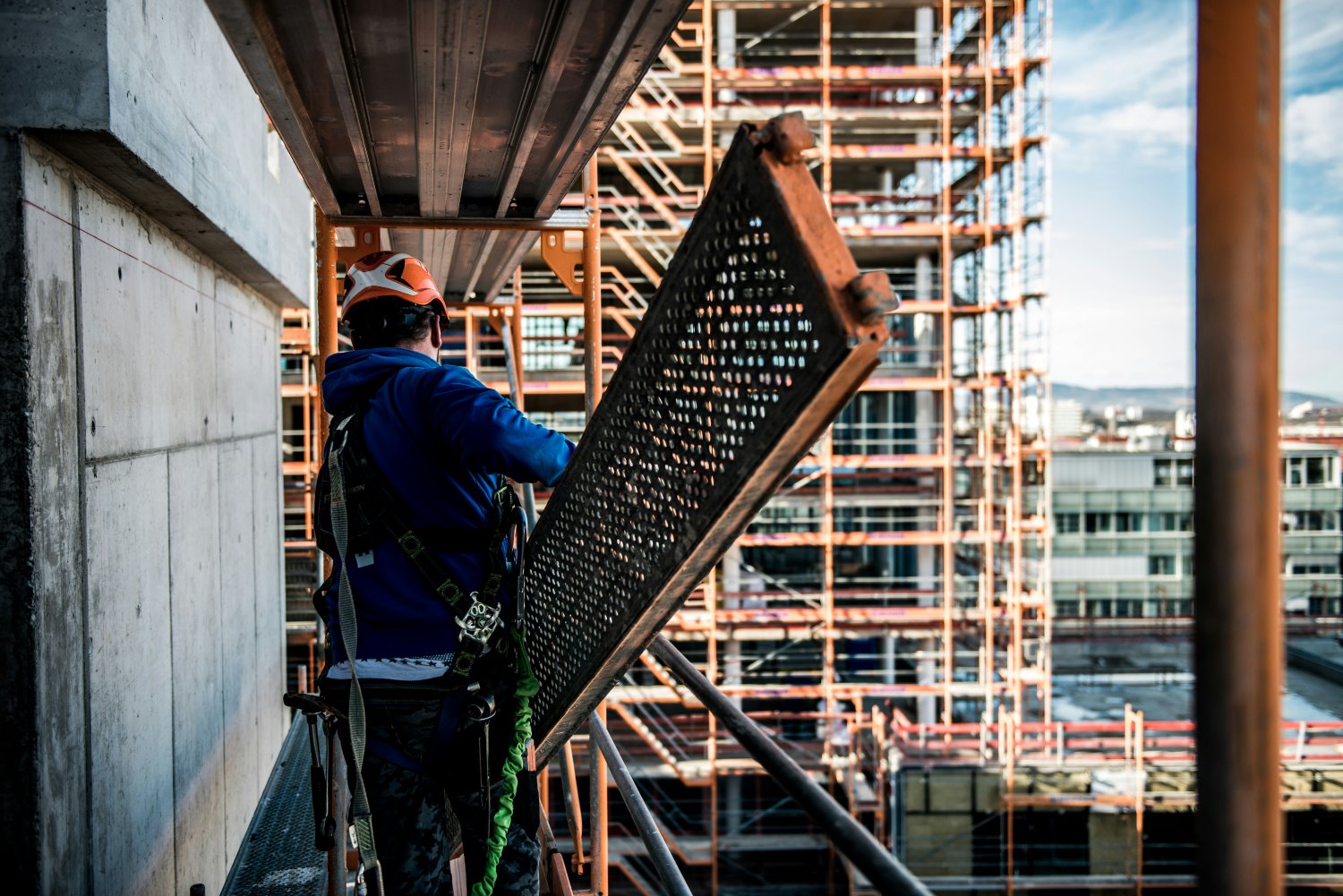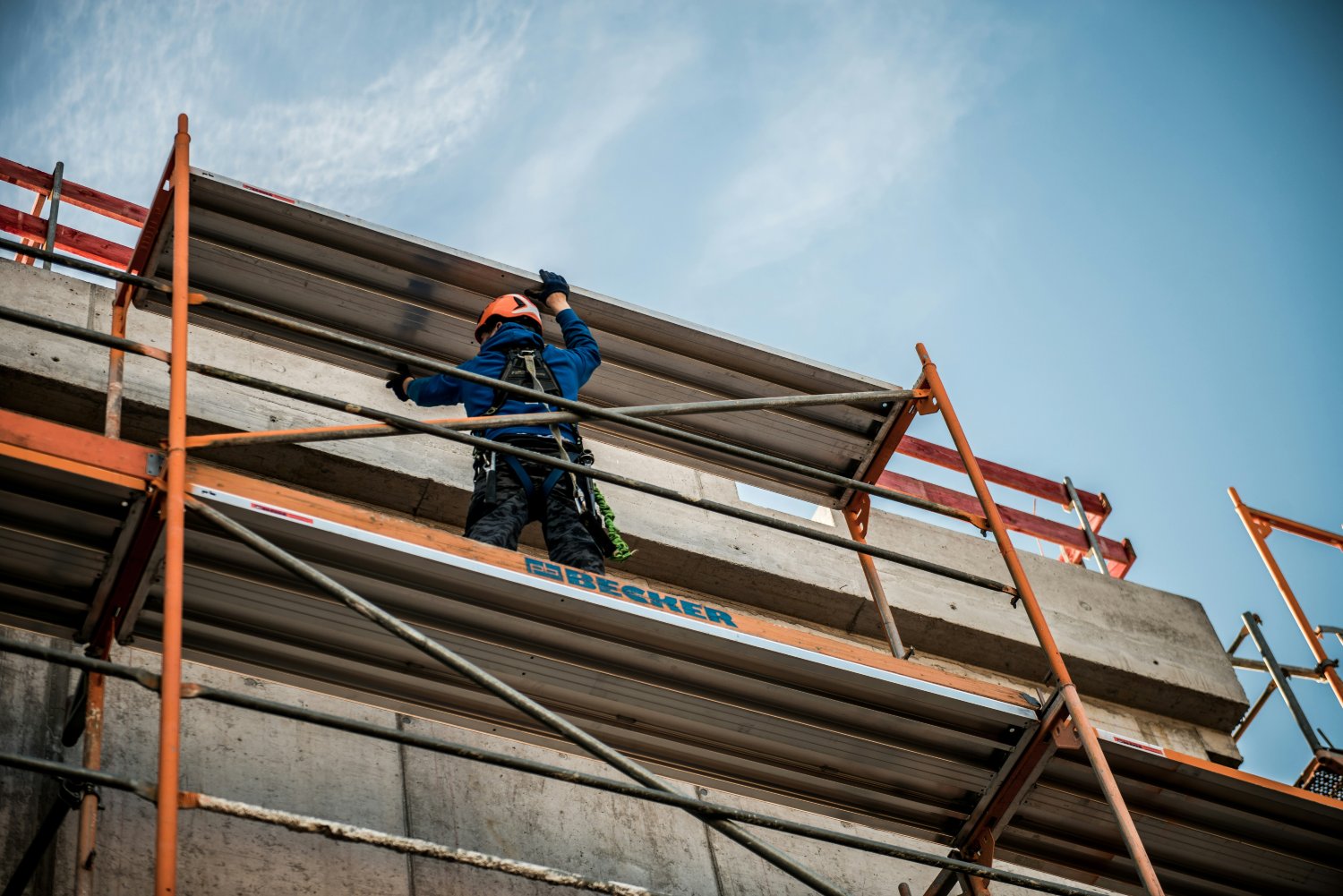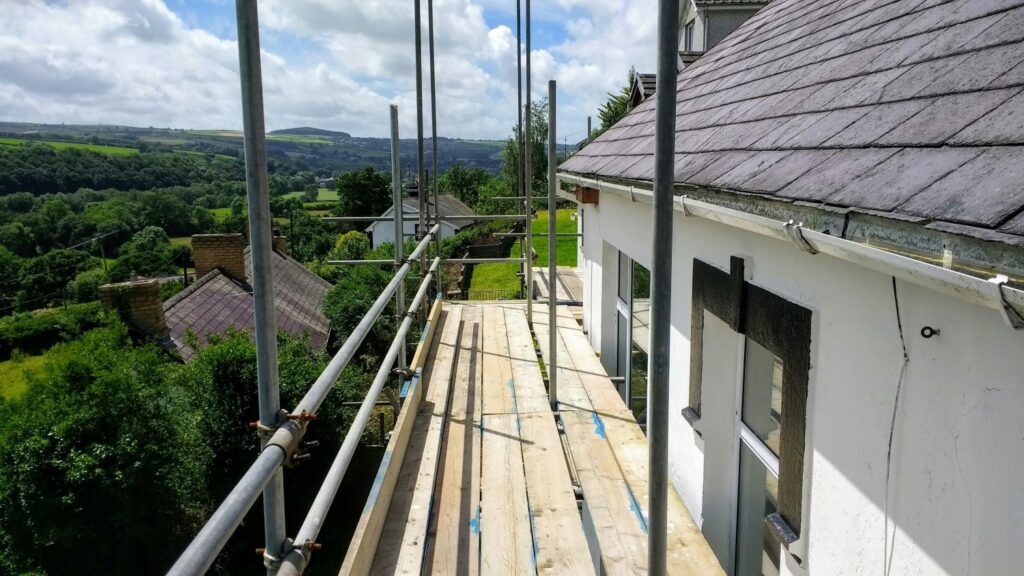A roofer has received a suspended prison sentence after a man fell from a scaffold in Devon, suffering serious injuries.
After falling from a height of more than 25 feet, the employee of a self-employed roofer was sent to hospital and put into an induced coma. A HSE investigation found grievous health and safety failings and a lack of supervision or suitable equipment while working at height.
This case study is a prime example of the importance of safe working at height, and the severe ramifications following an accident.

The Incident:
The employee, 36 years old, had been carrying roof slates down a ladder which was attached to the scaffold platform. He fell, breaking five vertebrae and suffered skull and rib fractured.
An air ambulance took the man to a hospital where he was put into an induced coma for five days. The father of three has since recovered but still suffers from the effects of his injuries.
The Investigation:
The HSE investigation found that the self-employed roofer who contracted the injured party failed to ensure proper health and safety on site. The 28 year old employer did not undertake risk management or planning, nor did he supervise the work which was done at height. Suitable equipment to work safely was not provided.
The HSE investigation found that ladders were used to transfer heavy slate tiles to and from the scaffolding platform and this practice was not, so far as reasonably practicable, safe. There are alternative methods of transferring the slate tiles to and from a scaffolding platform that eliminate the need for ladders to be used for this task. These include the use of a pulley system or use of a mechanical conveyor.
The Outcome:
The self-employed roofer pleaded guilty to breaching Work at Height Regulations 2005, and subsequently was sentences to 16 weeks in prison, and ordered to complete 150 hours of unpaid community work. He was also ordered to pay prosecution costs of £10,875.
HSE inspector Thomas Preston said “Falls from height account for around half of all deaths in the construction industry. “The risks of working at height and the control measures are well established, including the need to supervise the work appropriately.”
Mr Preston also said that when planning roof projects, construction businesses and contractors must consider effective methods and employee welfare.

What are the Learnings for Businesses and Self-Employed Workers
There are Key Safety Reminders for Working at Height:
- Risk Assessments and Planning – Identify and control hazards before starting work.
- Fall Protection – Use harnesses, lanyards, and secure anchor points.
- Proper Training – Ensure workers are competent and receive refresher training.
- Equipment Inspections – Regularly check scaffolding, ladders, and PPE.
- Emergency Planning – Have a rescue plan in case of a fall or equipment failure.
No job is worth risking your life or the life of an employee!
For more advice on your Health & Safety and to access our risk management services, contact our partner Sentient. Avoid scenarios such as the above by learning more about Sentient’s services. Contact Sentient and talk to our team for advice on Safe Working at Height.
Sentient are holding a Health and Safety webinar for No Falls Week on Tuesday 13th May at 10:00-11:00. You can find out more and register your place now here.

